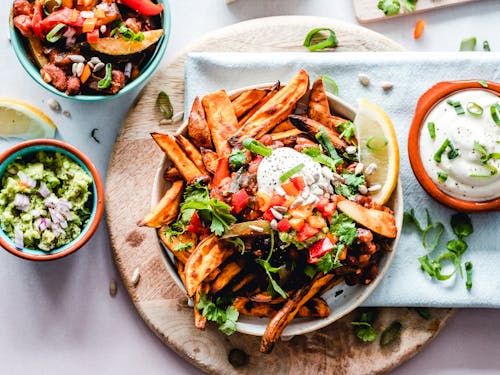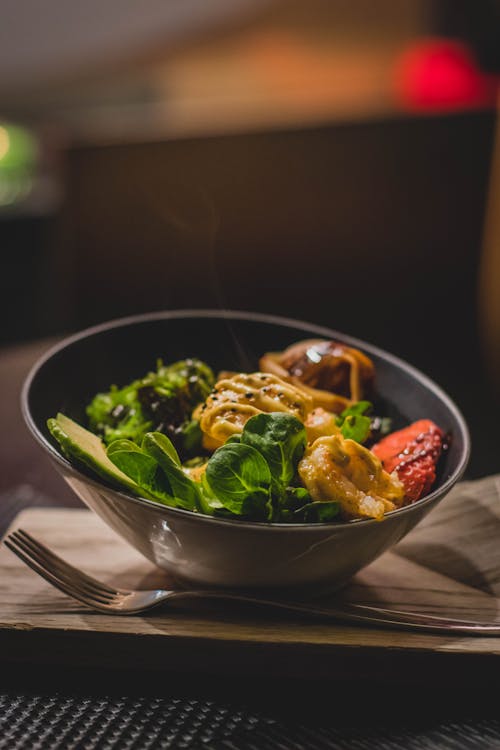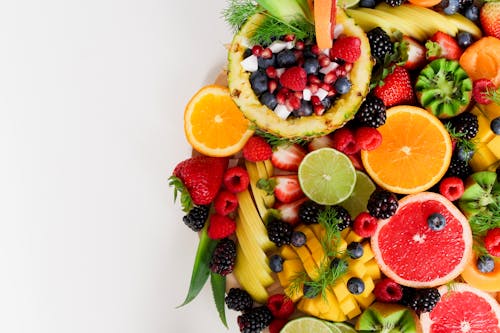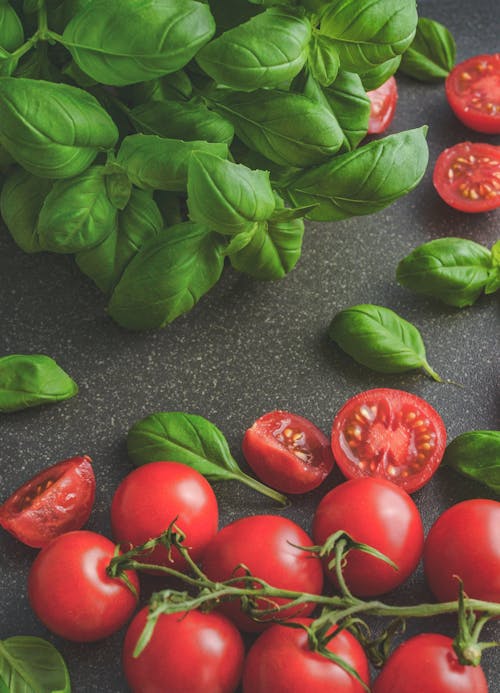The Truth About Fat-Fighting Foods: What Really Works and Why
n a world obsessed with quick fixes, crash diets, and fat-burning supplements, it’s easy to overlook the most powerful tools we have in the battle against excess body fat — whole, nourishing foods. The truth is, certain foods do help your body fight fat more effectively, but not in the magical way many diet ads promise. There’s no such thing as a single superfood that melts fat away, but there are plenty that support your metabolism, curb cravings, and optimize the way your body stores and uses energy.
The science behind fat metabolism is complex, but your diet plays a much bigger role than most people realize. Eating the right foods doesn’t just help you lose weight — it helps you build a sustainable lifestyle where your body is naturally better at managing fat. And in this age of processed snacks, energy crashes, and chronic stress, that kind of nutritional support is invaluable.
If you’re looking for practical, lasting changes to your eating habits, understanding the most effective fat-fighting foods is a great place to start.
How Fat-Fighting Foods Actually Work
Before diving into the grocery list, it’s worth clarifying what we mean by fat-fighting. These aren’t foods that torch fat overnight. Instead, they support your body’s natural processes in a few important ways:
-
Boosting metabolism so you burn more calories even at rest.
-
Balancing blood sugar to reduce fat-storing insulin spikes.
-
Reducing inflammation that interferes with hormone function.
-
Promoting satiety so you feel full and eat less.
-
Encouraging lean muscle growth, which increases daily calorie burn.
In other words, it’s not about eating a bowl of something and waking up slimmer. It’s about creating a system in your body that’s primed to handle energy efficiently — and store less of it as fat.
Protein-Rich Foods That Fire Up Your Metabolism
If there’s one macronutrient with a proven track record in fat loss, it’s protein. Eating more protein helps preserve lean muscle mass during weight loss and also ramps up something called the thermic effect of food — meaning your body burns more calories digesting protein than it does carbs or fat.
Lean meats like chicken breast, turkey, and grass-fed beef are popular choices for good reason. They’re filling, versatile, and packed with nutrients like iron and B12 that support energy metabolism.
For plant-based eaters, lentils, chickpeas, and edamame are excellent sources. These foods not only deliver a protein punch but also come with fiber, which adds another layer of satiety and helps regulate digestion.
Greek yogurt, especially the plain, unsweetened kind, offers high protein and gut-friendly probiotics. Add a handful of berries and you’ve got a snack that fuels muscle growth and supports digestion — two key players in fat loss.

Fiber: The Unsung Hero of Fat Control
People often overlook fiber when talking about weight management, but it might be one of the most powerful tools in your arsenal. Fiber slows digestion, stabilizes blood sugar, and makes meals more satisfying — all of which help you avoid overeating.
Oats are a stellar option, especially steel-cut or old-fashioned varieties. They’re minimally processed, high in soluble fiber, and keep you full for hours.
Chia seeds and flaxseeds are small but mighty, expanding in your stomach and forming a gel-like consistency that slows down digestion. They’re also great sources of omega-3s, which play a role in reducing inflammation — something that can hinder fat loss when left unchecked.
Vegetables like broccoli, Brussels sprouts, and carrots also come packed with fiber. And since they’re low in calories but high in volume, they help create that satisfying “full plate” without overloading on energy.
Healthy Fats That Actually Help You Burn Fat
It might sound counterintuitive, but eating fat can actually help your body burn more fat — as long as it’s the right kind.
Avocados are one of the best examples. They’re rich in monounsaturated fats, fiber, and potassium. While calorie-dense, they’re also deeply satisfying and help reduce the urge to snack between meals.
Nuts, especially almonds and walnuts, offer a good mix of protein, fat, and fiber. Just a handful can keep you full for hours. Studies have also shown that people who include nuts in their diets tend to lose more weight than those who don’t — possibly due to their impact on hunger hormones and blood sugar levels.
Olive oil is another staple in fat-fighting diets. Use it in dressings or to cook vegetables, and you get a dose of heart-healthy fat that supports hormone regulation and reduces inflammation — both key in maintaining a lean body composition.

Spices and Drinks That Kick Things Up a Notch
Sometimes the little things make a big difference. Certain spices and drinks may help rev up your metabolism, curb appetite, or enhance digestion.
Green tea, for instance, is rich in antioxidants called catechins that may enhance fat oxidation. While you won’t drop pounds just from drinking it, replacing sugary drinks with green tea can make a difference over time — especially if paired with good eating habits.
Black coffee, when consumed in moderation, is another metabolism booster. The caffeine can increase energy expenditure slightly, especially before workouts. Just skip the sugar-laden syrups and creamers.
Cayenne pepper and turmeric have also been studied for their anti-inflammatory and thermogenic properties. Turmeric in particular may help reduce fat storage by influencing fat tissue growth at the cellular level.
Low-Glycemic Carbs That Work With You — Not Against You
Carbohydrates aren’t the enemy. In fact, choosing the right kind can be incredibly helpful for weight management. The trick is to focus on low-glycemic carbs that digest slowly and don’t spike insulin.
Sweet potatoes are a great example — they’re packed with fiber, beta-carotene, and have a low glycemic load despite their natural sweetness.
Quinoa is another superstar. It’s technically a seed but acts like a whole grain, and it’s one of the few plant foods that contains all nine essential amino acids. That means it gives you protein and complex carbs in one neat package.
Brown rice, barley, and farro also fall into this category. They digest slowly, provide sustained energy, and keep your appetite in check far better than refined grains.

Fruits That Do More Than Just Taste Good
Fruits are often feared in diet circles because of their natural sugar, but when eaten in whole form (not juiced or dried), they offer fiber, water content, and powerful antioxidants that can actually support fat metabolism.
Berries — especially blueberries and raspberries — are low in sugar, high in fiber, and loaded with anthocyanins, which have been shown to reduce fat accumulation in animal studies.
Apples and pears, with their high water and fiber content, help fill you up with fewer calories. They’re ideal as snacks or part of a light breakfast.
Grapefruit has been associated with weight loss in several small studies. While it’s not a miracle food, its low glycemic index and appetite-suppressing properties make it a worthy addition to your diet if you like the tart flavor.
Foods to Limit or Replace for Better Fat Loss
Knowing what to add to your diet is just one part of the puzzle. The other part is cutting back on foods that sabotage your body’s natural fat-burning abilities.
Refined carbs, like white bread, pastries, and sugary cereals, cause blood sugar spikes and crashes that lead to increased fat storage and constant hunger.
Highly processed snacks that contain trans fats, refined oils, and artificial ingredients also disrupt your body’s metabolic signals, making it harder to manage weight over time.
Instead, replace them with whole-food versions that offer real nutrients — like whole grain crackers, roasted chickpeas, or air-popped popcorn with a touch of olive oil.
Building a Realistic, Fat-Fighting Meal Plan
You don’t have to count every calorie or eliminate entire food groups to lose fat. The key is consistency and food quality.
Try structuring your meals with this simple rule:
-
Protein the size of your palm
-
Vegetables that cover half your plate
-
Healthy fats like avocado or olive oil
-
Smart carbs like sweet potato, brown rice, or quinoa
Throw in a few fat-fighting snacks during the day — a handful of almonds, a boiled egg, Greek yogurt with berries — and you’ve got a daily routine that supports steady energy, balanced hormones, and yes, fat loss.

Final Thoughts
Fat-fighting isn’t about starving yourself or sticking to bland diet foods. It’s about choosing ingredients that work with your body’s natural systems — ones that support your metabolism, tame your appetite, and fuel your energy in a sustainable way.
The foods that help you lose fat are usually the same ones that help you feel better overall — more energetic, more focused, and more in control of your health. By including a variety of whole, minimally processed foods rich in protein, fiber, healthy fats, and antioxidants, you create an environment in your body that doesn’t just burn fat — it thrives.
There’s no need for magic pills or trendy fads. Just real food, eaten consistently, in a way that supports your long-term goals.



